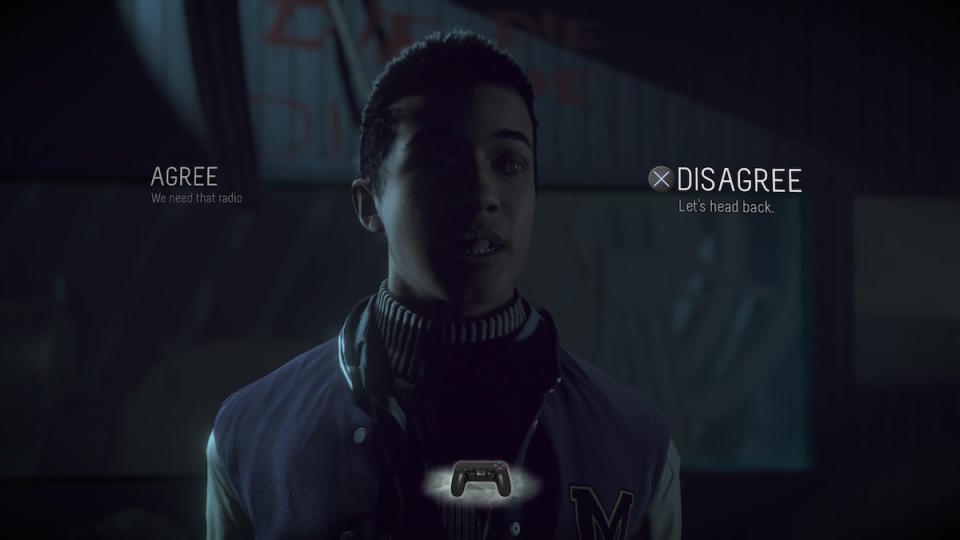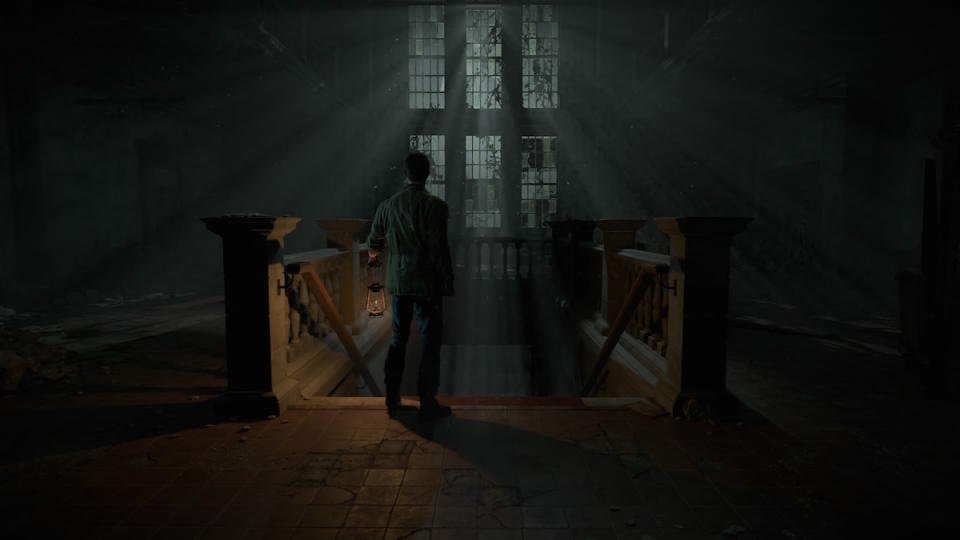The real horror of 'Until Dawn' is that Sony sent it to die

"Are we, like, in a movie right now?" It's an apt question one of the handsome teens starring in PlayStation 4's latest exclusive, Until Dawn, asked about an hour after I picked up the controller. Yes. No. Maybe. It's kind of hard to explain, and it appears Sony would rather not. At its core, Until Dawn is an interactive teen-horror movie (think '90s genre staples Scream or I Know What You Did Last Summer) set at a remote ski lodge where a murderous psychopath is on the loose. But after critics almost universally chastised Sony's other AAA tentpole, The Order: 1886, earlier this year for its gorgeous but bland cinematic leanings, "interactive movie" is a label the gaming juggernaut would rather not bandy about here.
In fact, Sony would prefer you not pay attention to this game at all. It's getting no love from the company's marketing department and was weirdly absent from this June's E3 media briefing. And that's a damned shame because Until Dawn is one of the best horror experiences -- interactive or not -- I've ever had.
For anyone that played 2010's Heavy Rain on PlayStation 3, Until Dawn will be incredibly familiar.
The Hayden Panettiere-starring Until Dawn began as a game for the PlayStation Move in 2012. Developer Supermassive Games made a few titles for Sony's motion controller prior to that (e.g., Tumble, Start the Party) to moderate success, but the road to PlayStation 4 has been paved with numerous delays these past three years.
The radio silence broke at Gamescom last year in Cologne, Germany, when Sony announced the game was coming to its latest console and that the PlayStation 3-specific Move-controls were being translated to the DualShock 4, a gamepad also capable of motion control. Beyond an appearance last December at the first annual PlayStation Experience in Las Vegas, a consumer-focused event, new details about Until Dawn have been few and far between. This isn't how big-budget exclusive games usually fare; you know practically everything about them before release due to PR-orchestrated hype.

Until Dawn's choice-based gameplay
That pre-release obscurity works in Until Dawn's favor, though, because I had no idea what to expect when I started playing. Let me be clear right up front: This is not a "game" in the typical sense. You can't draw a weapon whenever you want. Said armaments don't require scrounging for ammo; nor do you fight end-of-level bosses. But that's why Until Dawn is so refreshing: You're sitting in the director's chair for a killer ride.
Gameplay revolves around guiding the oldest looking teenagers you've ever seen (apart from Andrea Zuckerman on Beverly Hills 90210) from one gently flashing object of interest in the environment to the next in order to advance the story. This progression sees the player making binary, narrative-affecting choices at key moments and pressing buttons in sequence as they appear onscreen (referred to as quick-time events). And really, that's about it. For anyone that's played 2010's Heavy Rain on PlayStation 3, which used similar play mechanics to tell its story, Until Dawn will be incredibly familiar.
If you've ever found yourself screaming at the TV while watching stupid teens do absurd things in horror movies, Until Dawn is the game for you. It smartly flips genre tropes on their head, embracing gaming's player-first nature by suddenly giving you control. For example, I happened across a machete after one terrifying encounter and instinctively yelled, "Get the fucking machete, dude!" and then was pleasantly surprised by a prompt to pick it up.

The team at Supermassive Games definitely knows how to construct a shot.
That Until Dawn feels like an awesome indie fright-fest rather than late-night Netflix stoner fare, like Zombeavers, is because it was written by Larry Fessenden and Graham Reznick, a pair of Hollywood scribes whose resumes read like contemporary horror's greatest hits. In fact, the movie-poster-adorned walls of Dawn's ski-lodge home theatre highlight the writers' past IMDb credits: The Innkeepers, The House of the Devil and Stake Land. It's a knowing wink to horror fans. Without the duo's guidance, it's possible Dawn could've devolved into a cheesy trope-fest.
Until Dawn feels like an awesome indie fright-fest rather than late-night Netflix stoner fare
It's clear Fessenden and Reznick have the utmost respect for horror and they gleefully play with how well-tread genre archetypes generally work. There's a scene where a jock and the "hottest girl in high school" slink away to a secluded spot to have sex, because that's what happens in horror films. However, lines like, "It's so cold in here my tongue would get stuck to your flagpole," make the clichéd situation feel fresh, and most importantly funny. Dawn expertly balances between a genuine atmosphere of suspense and humor because a player can only take so much interactive stress before calling it quits.
But as much as I love Until Dawn, it has some definite flaws. The game uses incredibly cool-looking cinematic camera angles to frame each scene -- think: early Resident Evil releases -- but the flip side is that the game's sometimes-clunky movement is occasionally at odds with player progression. I awkwardly stumbled around scenes because I couldn't see exactly where I needed to go (there's no free-look system) more than a few times. It was a hard slap that took me out of the moment and reminded me that I wasn't watching a movie; I was playing a slightly unpolished video game.
Horror flicks famously have a hard time wrapping up their stories too, and Until Dawn suffers a bit from this, squandering some of its momentum before the end credits roll. One of gaming's greatest sins -- backtracking through previously explored areas -- is on full display here and a few parts feel like years-late commentary on the horror genre itself. For the most part, Until Dawn's third act does what it needs to and reaches a satisfying conclusion. It, however, can't quite match the intensity and mystery of the five or so hours that preceded it.
Unlike The Order, which developer Ready at Dawn framed with constant letterbox bars for a more cinematic appeal, Until Dawn doesn't rely on any such crutch to justify its movie-like presentation, nor does it need to. In fact, it's pretty telling that the black bars only appear in the pause menu and non-interactive cutscenes. The only assist Until Dawn really needed was some pre-release buzz from Sony's well-oiled hype machine. The sad truth, however, is that Sony's sending this game to die by no fault of Supermassive's own. Until Dawn is an incredibly strong exclusive, and given its history of delays, pushing the release date a few more months wouldn't have hurt; the game is perfect for Halloween frights. That Until Dawn isn't getting any corporate love is almost as scary as the game itself.

